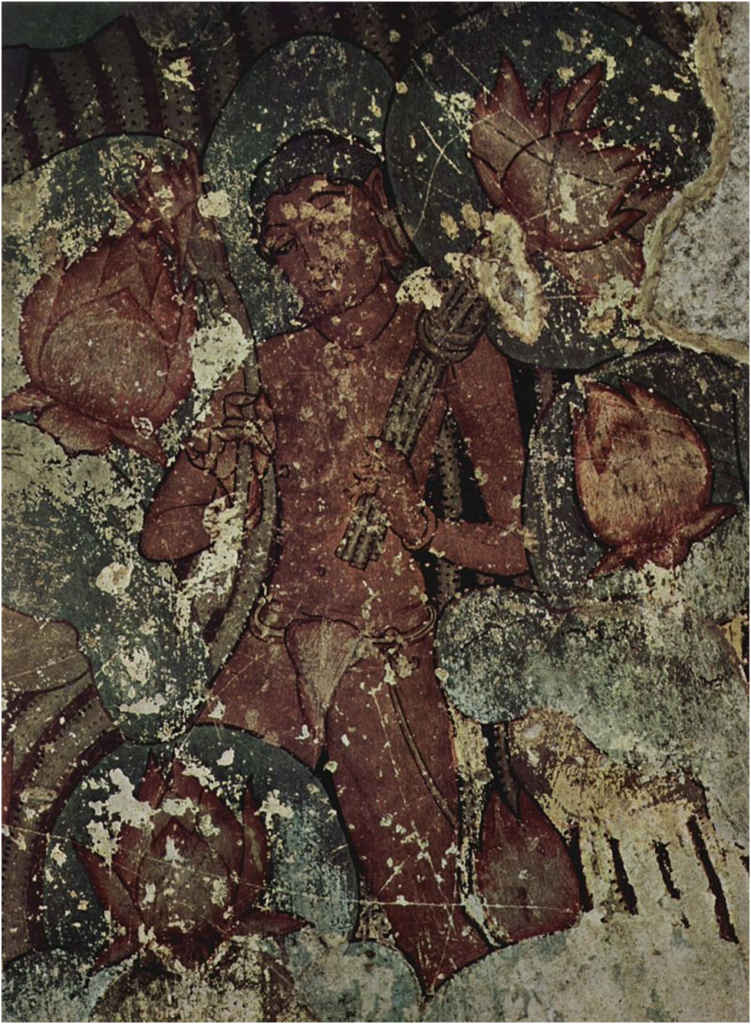
Sittanavasal Cave is a 2nd-century Tamil Śramaṇa complex of caves in Sittanavasal village in Pudukottai district of Tamil Nadu.
Its name is a distorted form of Sit-tan-na-va-yil, a Tamil word which means “the abode of great saints” .
The monument is a rock-cut monastery or temple.
Sittanavasal is a rock-cut cave, situated on the western side of central part of a hill, which runs in a north–south direction. The Jain natural caverns, called Ezhadippattam are approached from the foothills.
Created by Tamil Śramaṇa, it is called the Arivar Koil, and is a rock cut cave temple of the Arihants.
The cave temple has simple pillars and sculptures of Jain Tirthankaras.
It contains remnants of notable frescoes from the 7th century. The murals have been painted with vegetable and mineral dyes in black, green, yellow, orange, blue, and white. Paintings have been created by applying colours over a thin wet surface of lime plaster.

The paintings are with theme of Jain Samavasarana, the “most attractive heavenly pavilion” (it means the attainment of nirvana), and Khatika bhumi.
These frescoes are considered to be some of the best frescoes of medieval India next to frescoes of Ajanta Caves and Bagh Caves.
Archaeological Survey of India has listed Sittanavasal Cave in the list of “Must See” Indian Heritage.
The Sittanavasal Cave are listed as one of the Adarsh Smarak Monument by Archaeological Survey of India.
PRACTICE QUESTIONS
QUES . Consider the following pairs : UPSC PRELIMS 2023
Site : Well known for
1 . Besnagar : Shaivite cave shrine
2 . Bhaja : Buddhist cave shrine
3 . Sittanavasal : Jain cave shrine
How many of the above pairs are correctly matched?
(a) Only one
(b) Only two
(c) All three
(d) None
Ans (b) Besnagar is a Vaishnavite cave shrine.The Greek ambassador called Heliodorus set up a pillar in honour of Lord Vasudeva at Besnagar near Vidhisa in MP around the middle of the second century BC . Bhaja caves are Buddhist caves in Pune. They have apsidal vault roof chaitya halls.
